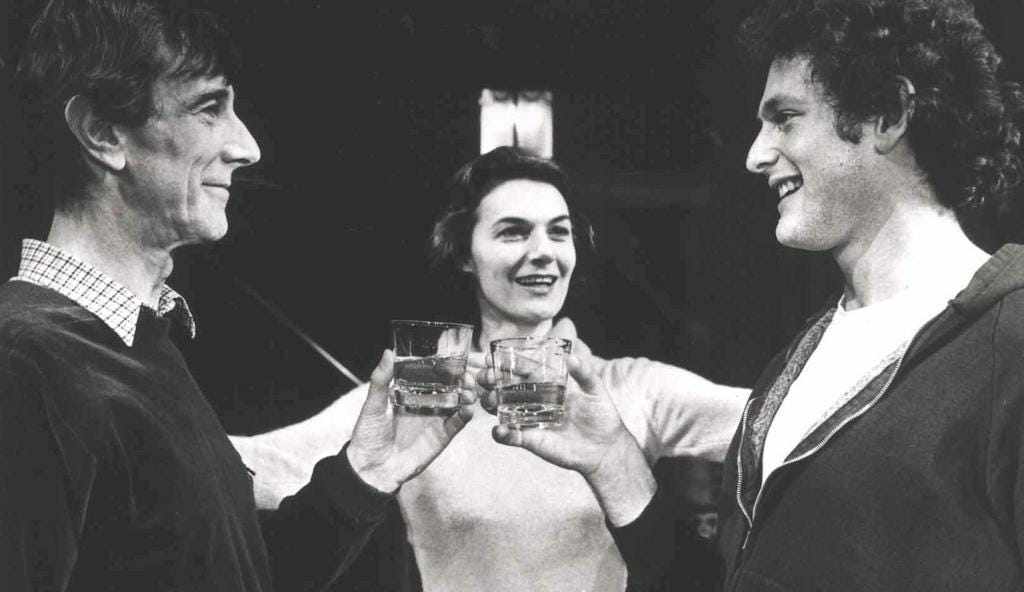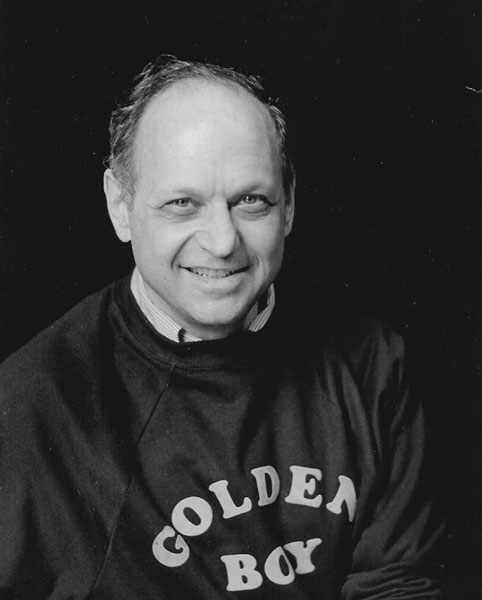
Happy Thanksgiving … and Happy Anniversary to Guys and Dolls, which opened seventy years ago tonight on Broadway. Having recently directed it in summer stock in 2018, I can attest that its effect on our Plymouth, Mass audience was one of unadulterated joy. I marveled at how many of the jokes still played and even dared one actor in the role of Lt. Brannigan to make one nearly impossible line work; an ancient reference to a show that closed in 1923. "You look like the male chorus of Blossom Time" — and dammit if he didn't score a big laugh!
My first exposure to it was as a kid in the 1960s watching Frank Sinatra and Marlon Brando as Nathan Detroit and Sky Masterson on my parents’ black and white TV. I was instantly captivated by composer-lyricist Frank Loesser's winning score, even if three songs were cut, and two were replaced with inferior ones ("A Bushel and a Peck" became "Pet Me, Poppa" and Brando warbled "A Woman in Love" instead of duetting on "I've Never Been in Love Before"). One entirely new one inserted was a solo for Sinatra, "Adelaide," which is charming, but unnecessary.

My experience with its stage productions began with a 1976 Broadway revival I saw while still at college (with an all-Black cast), followed by a London production in 1984, and then again on Broadway in 1992, in a loving restoration so successful it nearly ran as long as the original, falling fifty-eight performances shy of topping it. The strength of its construction and pitch-perfect score has never ceased to amaze me. I was in it as a teenager (a seventeen-year-old as the middle-aged Benny Southstreet) and got to see it many times as performed at my children's elementary school where my nine-year-old son was Nicely-Nicely Johnson, and my seven-year-old daughter was Miss Adelaide .
It’s difficult to argue with the reputation of Guys and Dolls as the embodiment of a perfect musical comedy — a reputation that began with its opening night when the New York Daily News called it “A perfect musical comedy!" And the famed lyricist Fred Ebb once told an interviewer, “It was the first musical I ever saw [at age eleven] and, naturally, I thought it was the best musical I ever saw. And nothing I’ve seen in the interim has done anything to diminish my opinion.” Though New York Times theatre critic Brooks Atkinson may have stated it best when he wrote in his opening night review “we might as well admit that Guys and Dolls is a work of art.”

Depicting a group of rough and tumble characters, denizens of Times Square that only ever existed in a fairy tale, all sprung from the imagination of the short story writer and newspaper columnist Damon Runyon, a pal to everyone from sports greats such as Babe Ruth and Jack Dempsey to criminals the likes of Al Capone. The language he invented for his collection of lovable losers with names like Harry the Horse and Liver Lips Louie was so distinct that the term “Runyonese” entered the lexicon and has never exited. It's a mix of very formal speech (no contractions) and hilarious slang, an example illustrated best from the short story “The Idyll of Sarah Brown” (from which Guys and Dolls pulls its main storyline) when the gambler Sky Masterson offers this advice from his father: “Son, you are now going out into the wide, wide world to make your own way and it is a very good thing to do, as there are no more opportunities for you in this burg.”

Guys and Dolls began with Cy Feuer and Ernie Martin, the producers of Loesser’s first Broadway musical, Where’s Charley? When they saw in Runyon’s stories the notion of a musical, they immediately turned to Loesser. Book writers came and went, none of whom grasped the special qualities that made Runyon’s stories so unique. Finally, Hollywood screenwriter and playwright Jo Swerling wrote an entire first act, but it was decided that it too lacked the specificity of language, as well as the humor that was already evident in the songs Loesser was composing — at the time, he’d finished fourteen of them!
Enter Abe Burrows, a busy man when the Guys and Dolls team approached him to write what would be his first book to a musical. Having become famous for writing dozens of episodes of Duffy’s Tavern, at one time one of the most popular radio programs in the country, he was an inspired choice. As he himself wrote in his autobiography, Honest Abe: “The people on that show were New York muggs, nice muggs, sweet muggs, and like Runyon’s muggs they all talked like Ladies and Gentlemen.” Burrows took on the challenge of crafting a story around the songs Loesser had already written, all while staying truthful to Runyon’s inimitable way with phraseology. Under that difficult task, Burrows succeeded better than anyone could have imagined (himself included). Though with George S. Kaufman hired as director, Burrows had the invaluable contributions of one of the finest comic minds in the business. Not only was Kaufman one of the leading playwrights of the 20s and 30s, but a brilliant director of such Broadway hits as The Front Page, Of Mice and Men and the first musical to win the Pulitzer Prize for drama, the Gershwin’s Of Thee I Sing (although Kaufman always took the more modest credit of “staged by” rather than “directed by,” for reasons I’ve never had adequately explained).

The original cast of Guys and Dolls boasted a wonderful team of actors including Robert Alda, Isabel Bigley, Vivian Blaine and Sam Levene. It was a musical unique in its trajectory, since it did not suffer the usual pitfalls or birth pangs of similarly famous shows. It opened to rave reviews in its only out-of-town engagement in Philadelphia, but Kaufman, ever the perfectionist, continued to polish things until it positively glowed like a jewel. It opened at the 46th Street Theatre on November 24, 1950 and stayed there three years, racking up 1,200 performances, a significant number in those days (and profit worthy).

I would like to say Guys and Dolls never fails to delight and that it's practically foolproof, except for a 2009 Broadway revival that disproved that theory. Shocking in its ineptitude, it ran two months too long. The culprit of this crime was its director Des McAnuff, who somehow believed he need to "improve" an already masterful show. That was eleven years ago and though New York hasn't seen it since, over the past fifteen years, British audiences can't seem to get enough of it. A 2005 London production featured Ewan McGregor as Sky, Jane Krakowski as Miss Adelaide and Tony Award winner Douglas Hodge as Nathan, and was well received. Then in 2016, the American actor Richard Kind played Nathan, with Rebel Wilson joining the cast down the line as Miss Adelaide. And an all-new Black production was mounted in the U.K. in 2017, with the action relocated to 1939 Harlem in order to change the orchestrations to better reflect that period's jazz and gospel music.
None crossed the pond (as Variety used to phrase it), which is too bad, as Broadway needs to host one of the most gratifying shows in the musical canon again soon. If and when that happens I, for one, will take my seat, fingers crossed, for a visit with an old friend.

If you enjoy these columns, check out Up in the Cheap Seats: A Historical Memoir of Broadway, available at Amazon.com in hardcover, softcover and e-book. And please feel free to email me with comments or questions at Ron@ronfassler.org.





















Write a comment ...